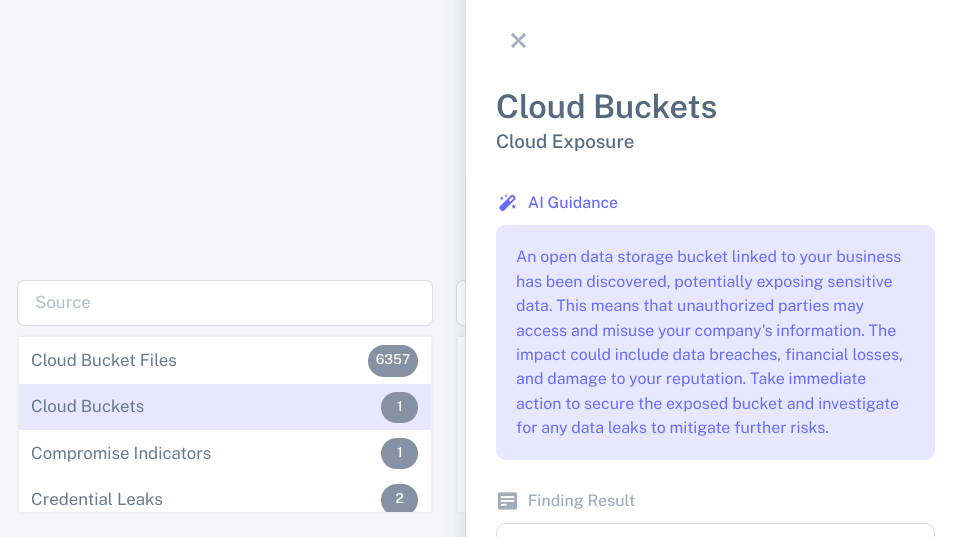Start monitoring today.
Begin monitoring threat intelligence to act before attackers do.
Get Started
2024-11-01 Information Requirements External Exposure
There is an escalating trend among companies to utilize cloud-based solutions. Cloud exposure refers to the potential dangers and susceptibilities that come with employing these cloud-based services. Frequently, corporations will store critical information, proprietary knowledge, and vital infrastructure within these platforms - a feature which makes them attractive prey for online criminals. Due to their broad scope, cloud systems create complex networks of possible points of attack; cyber culprits can manipulate these vectors in order to gain illicit entry into secure areas, steal data, or disrupt operations.
Mismanaged storage containers are a significant risk factor in cloud vulnerability. Services such as Amazon S3, Google Cloud Storage, and Azure Blob Storage facilitate file and data retention. However, misconfigured access to these containers could inadvertently disclose sensitive data. Bad actors hunt for poorly configured buckets to gain access and exfiltrate data.
URL shorteners, designed for creating compact links, can be maliciously exploited to expose sensitive or otherwise non-public systems and information. Organizations may be unaware that their employees utilize URL shortening services to obfuscate links leading to internal dashboards, confidential documents, or restricted resources. These seemingly innocuous shortlinks, when discovered by attackers, serve as a direct pathway to key systems for potential exploitation and unauthorized access.
The dark web frequently serves as a commercial platform for cybercriminals to trade stolen information, resulting in an advantageous revenue stream. Personal details, monetary records, and proprietary business intelligence are highly sought after commodities that lure those with nefarious motives. Companies may bear the brunt of financial setbacks or damage to their reputation if confidential data is traded or abused.
Cybercriminals frequently target individual and business identities. The illicitly acquired information can be utilized for activities like identity theft, fraudulent acts, or even industrial spying. Such situations may result in catastrophic effects on both personal and corporate levels.
To reduce the potential danger of improperly set up storage containers, firms must embrace a secure-by-default mentality. They should implement minimum necessary access controls, periodically review permission settings, and mandate encryption for data at rest and in transit. Cloud service providers often provide guides on security settings which businesses ought to adhere to in order to bolster their cloud protection stance.
It's imperative to establish ongoing monitoring of cloud environments, allowing for quick detection and resolution of possible problems. Services such as ThreatHarvest proactively monitor for misconfigured buckets and short URLs that may be inadvertently disclosing information. Organizations are notified so that they can take action to correct the misconfiguration and understand their exposure.
Begin monitoring threat intelligence to act before attackers do.
Get Started